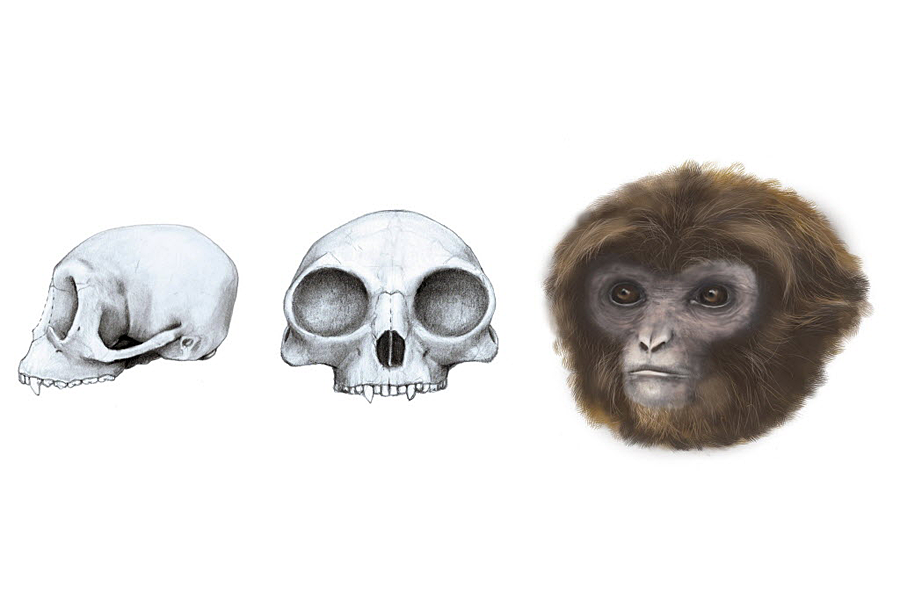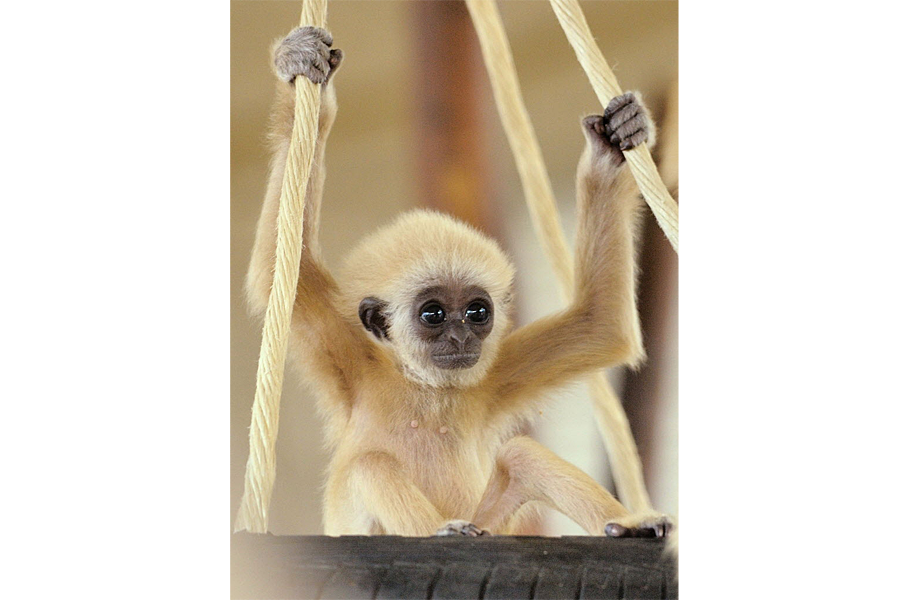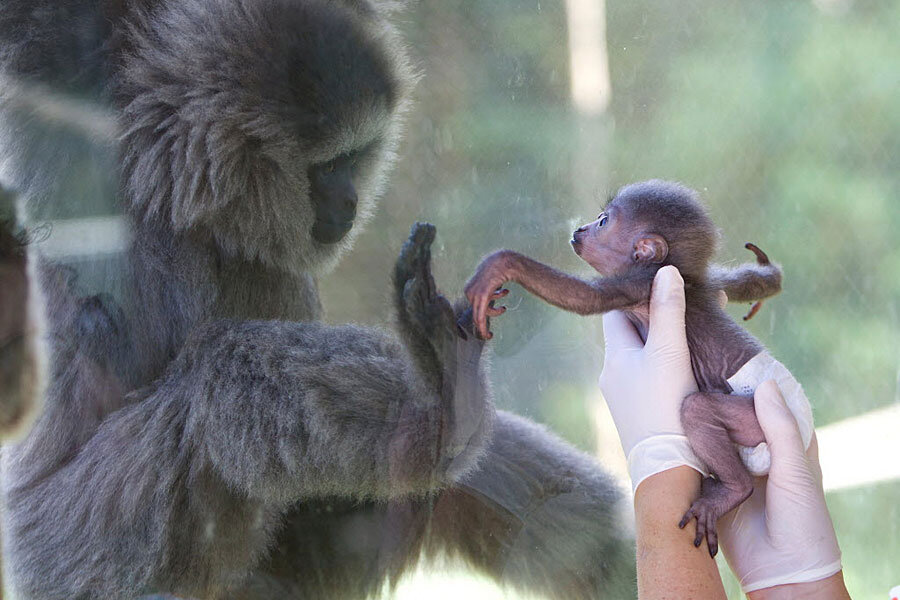Was the common ancestor of all apes actually petite?
Loading...
Did apes shrink or grow throughout evolution?
Scientists previously thought that small-bodied apes shrunk as they diverged from the great apes, a group that includes humans. But the common ancestor of all apes may have actually been quite small.
Researchers found a new primate's partial skeleton that may change evolutionary history. The ancient animal holds many traits similar to both branches of ape – and it's small.
Lesser, or small-bodied, apes and great apes diverged some 17 million years ago. Many scientists thought that the common ancestor of all living apes was more akin to the large great apes. But they may be wrong. This new species of primate sits near the base of the ape family tree, offering clues to an alternate story.
Researchers describe the ancient primate, dubbed Pliobates cataloniae, in a paper published online Thursday in the journal Science.
Since no small-bodied ape had ever been found with great ape features, study author and paleobiologist David Alba tells The Christian Science Monitor in an interview, “researchers tended to think that the last common ancestor of the group was of relatively large body size.”
In that scenario, the living small-bodied apes, the gibbons and siamangs, had become dwarfed over millions of years of evolution.
But, “the new genus that we describe in Science suggests that this might not necessarily be the case,” says Dr. Alba. “It is more likely that the last common ancestor of the group was in some, not all, respects much more gibbon-like than previously thought.”
Mosaic features, both primitive and modern, in the cranial and skeletal fossils of Pilobates tipped off the researchers. Although the ape is small-bodied, it has features like both the great and lesser apes.
At the root of the ape family tree
Pliobates roamed the Earth some 11.6 million years ago, millions of years after the ape divergence. But it could still hold insights into the ape’s common ancestor.
The researchers believe the emergence of Pliobates’ ancestors occurred just before the lesser and greater apes split. “It’s a late survivor of an ape that diverged just before this divergence,” Alba explains.
At the time, there were a lot of species splitting off. Alba says this was emblematic of the complexity of evolution. "Evolution is not a linear process, but it’s rather more bushy," he says.
On the primate family tree, Pliobates sits between the divergence of monkeys and apes, and the divergence of the two categories of apes. But, “Pliobates is more related to apes and humans than to monkeys,” says Alba.
Because of Pliobates’ close evolutionary position, features that it had likely existed in the apes’ common ancestor too.
“Pliobates suggests to us that some key features that characterize all the extant hominoids [living great apes] were already present in the last common ancestor,” Alba says. “This is important for understanding the later evolutionary history of the group.” That later evolution includes the evolution of Homo sapiens.
Imagining a common ancestor
To describe a common ancestor of living animals, scientists might look to find common ground in modern specimens. But primate evolution is more complex.
“The problem is that we, the extant hominoids, are very few,” says Alba. The short list includes humans, orangutans, chimpanzees, gorillas and gibbons.
“This is a very restricted diversity compared to what this group was in the past,” he says. Apes in the Miocene Epoch were diverse in size, appearance and abilities. There were more than 30 types of apes at the time.
So, there is not enough data among the living apes for researchers to describe a common ancestor.
“The diversity you have is so restricted that you can get easily mistaken by features that have independently evolved,” Alba explains.
Thus, Pliobates occupies an important place in the puzzle of hominoid evolution. The features that it has can help researchers sort out which ape and human features were inherited and which evolved in the different groups independently.
So what did this ancient primate look like?
The Pliobates specimen found was a mature female. Researchers looked at the wear and development of her teeth to determine that information.
Found during excavations for the expansion of the Can Mata landfill near Barcelona, Spain in 2011, she likely weighed between 8.8 and 11 pounds, a weight similar to the smallest of gibbons.
Her skull is also similar to a gibbon’s, with round, goggle-like eye sockets.
But her skeleton showed some differences. Gibbons have extremely long arms and Alba doesn’t picture the Pliobates specimen to have had as lanky limbs.
Her elbow and wrist joints suggest that she did not swing from trees as modern gibbons do. Instead, she was likely a climber, using both hands and feet to grasp branches as she moved up a tree.
Why does primate evolution matter?
“It’s often said that it’s the only field where there are more researchers than actual fossil remains,” jokes Alba. But, he says, this research could satisfy people's curiosity about their own origins.
“People are always seeking answers. People want to know what we are doing here and why we are here. Science cannot give these answers, but,” he says, “science can explain how we got here and who our ancestors were and the path of evolution.”








